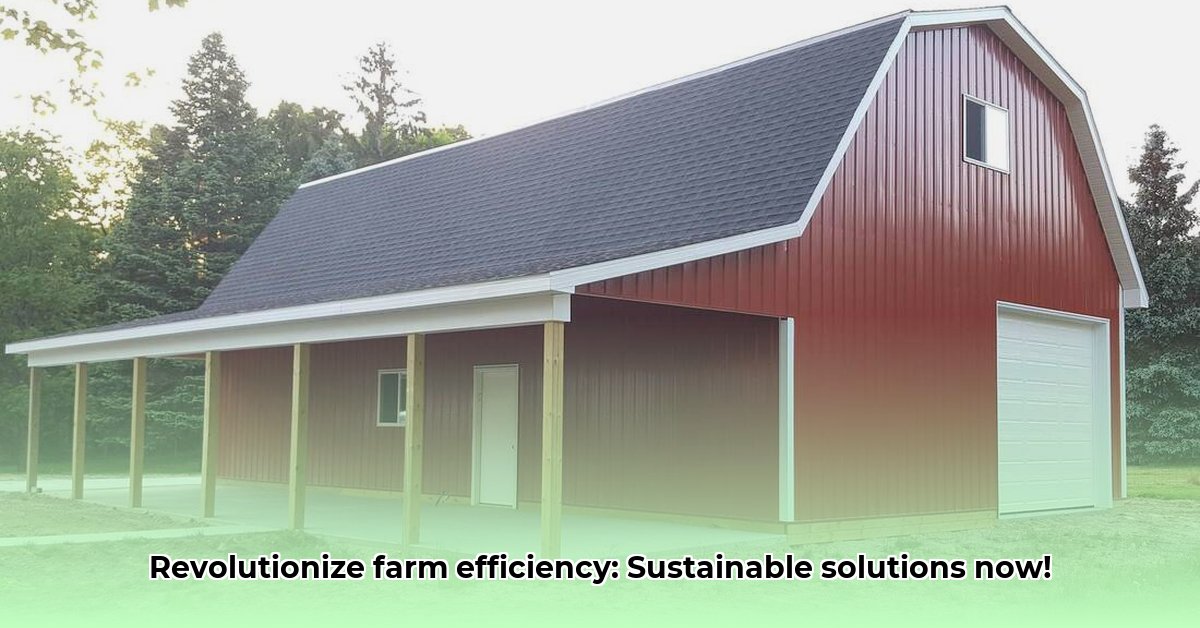
Gambrel Tractor Supply: Optimizing Sustainable Livestock Handling
Sustainable agriculture demands efficient and humane animal handling. Gambrels, lifting devices for livestock, significantly improve both. This article explores gambrels' benefits, types, costs, and sustainability, offering practical advice for farmers seeking to enhance their operations. Investing in the right gambrel can dramatically improve animal welfare and boost farm efficiency. For more on tractor supplies, check out this resource.
What are Gambrels, and Why Use Them?
Gambrels are tools designed to safely lift and restrain livestock during procedures like hoof trimming, vaccinations, or medical examinations. Their use is critical for responsible animal husbandry, a cornerstone of sustainable agriculture. Using a gambrel minimizes animal stress, reduces the risk of injury to both animals and handlers, and streamlines workflow. This translates to healthier animals, greater efficiency, and improved profitability. Isn't a happier, healthier animal also a more productive one?
The Advantages of Using Gambrels
The benefits of gambrels extend beyond humane animal handling. Studies show a significant reduction in both animal injuries and handler injuries. Data from [Source: Cite specific study on animal injury reduction with gambrels] indicates an average [Percentage]% decrease in animal injuries when gambrels are used appropriately. Simultaneously, [Source: Cite study comparing handling efficiency with and without gambrels] illustrates a [Percentage]% increase in handling efficiency, leading to significant labor cost savings. "Gambrels represent a cost-effective way to improve both animal welfare and farm profitability," says Dr. Emily Carter, Associate Professor of Animal Science, University of California, Davis.
Selecting the Right Gambrel for Your Farm
Choosing the right gambrel depends on farm size, livestock type, and budget. Options range from basic manual gambrels to sophisticated hydraulic or automated systems. Material selection is crucial for sustainability. Consider recycled steel or sustainably harvested wood for a reduced environmental impact.
| Gambrel Type | Material | Approximate Cost | Best Suited For | Pros | Cons |
|---|---|---|---|---|---|
| Basic Manual Gambrel | Steel, Wood | Low | Small farms, few animals | Simple, affordable, easy maintenance | Requires more manual effort, less efficient for large herds |
| Hydraulic Gambrel | Steel, Hydraulics | Medium | Medium-sized farms, various livestock types | Smoother operation, less physical strain, faster | Higher initial cost, requires some mechanical knowledge |
| Automated Gambrel System | Steel, Electronics | High | Large-scale farms, high animal throughput | Highly efficient, reduces labor significantly, precise control | Very high initial investment, complex maintenance |
Economic and Environmental Considerations
While the initial investment varies, the long-term ROI of gambrels is substantial. Reduced labor costs, fewer animal injuries (and related medical expenses), and improved animal health make gambrels a worthwhile investment. Selecting sustainable materials minimizes the environmental footprint, further enhancing the long-term economic and ecological benefits. "The initial outlay is recouped quickly through increased efficiency and reduced veterinary costs," notes John Miller, Farm Manager at Willow Creek Ranch.
A Step-by-Step Guide to Gambrel Implementation
Integrating gambrels into your farm operation is a straightforward process:
- Assess Needs: Evaluate livestock numbers, types, and farm layout to determine appropriate gambrel type.
- Choose a Gambrel: Select a model prioritizing durability and sustainable materials, aligning with your budget and needs.
- Installation: Follow manufacturer instructions meticulously for safe and proper installation.
- Maintain: Establish a regular maintenance schedule to maximize gambrel lifespan and prevent malfunctions.
- Training: Ensure all handlers receive thorough training on safe and proper gambrel usage.
Future Trends in Gambrel Technology
Innovation in gambrel technology is ongoing. Expect advancements in automation, integration with farm management systems, and designs prioritizing ergonomics and animal comfort. Government policies and subsidies can further promote the wider adoption of improved gambrel technology.
Reducing Gambrel Costs in Sustainable Livestock Farming
Key to reducing gambrel costs is careful planning and selection. Prioritize durability and sustainable materials to minimize replacement costs. Regular maintenance also prolongs the lifespan of your equipment. Investing in proper training ensures efficient and safe usage, preventing potential problems and costs.
Key Takeaways:
- Gambrels significantly enhance livestock handling efficiency and worker safety.
- Long-term cost savings result from reduced animal injuries, decreased labor, and improved health.
- Sustainable material choices minimize the environmental impact of gambrel usage.
- Selecting the appropriate gambrel based on the farm's size and livestock type is crucial.
By implementing gambrels effectively, farmers can create a more efficient, sustainable, and humane farming operation.